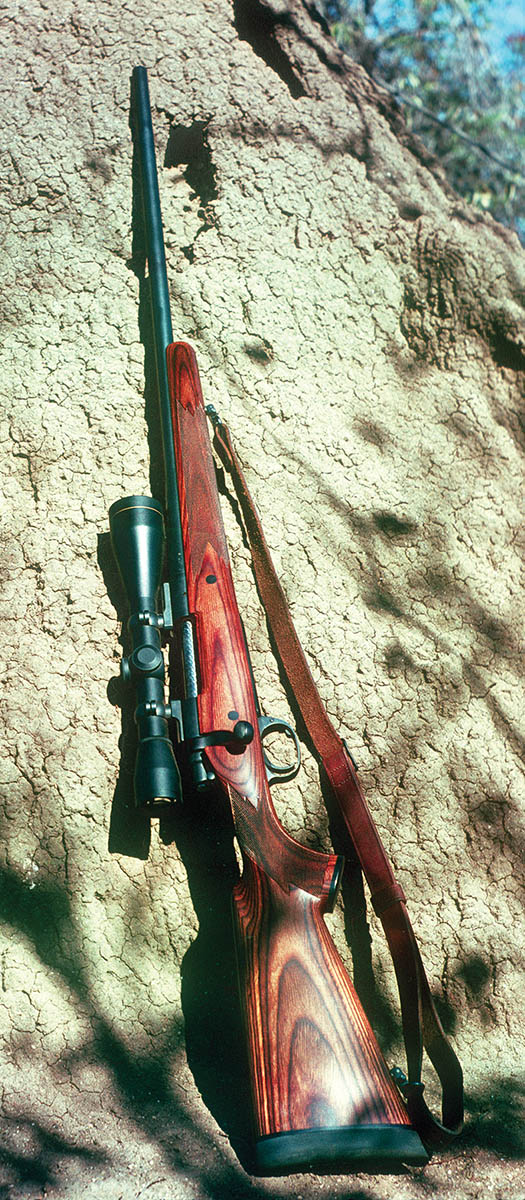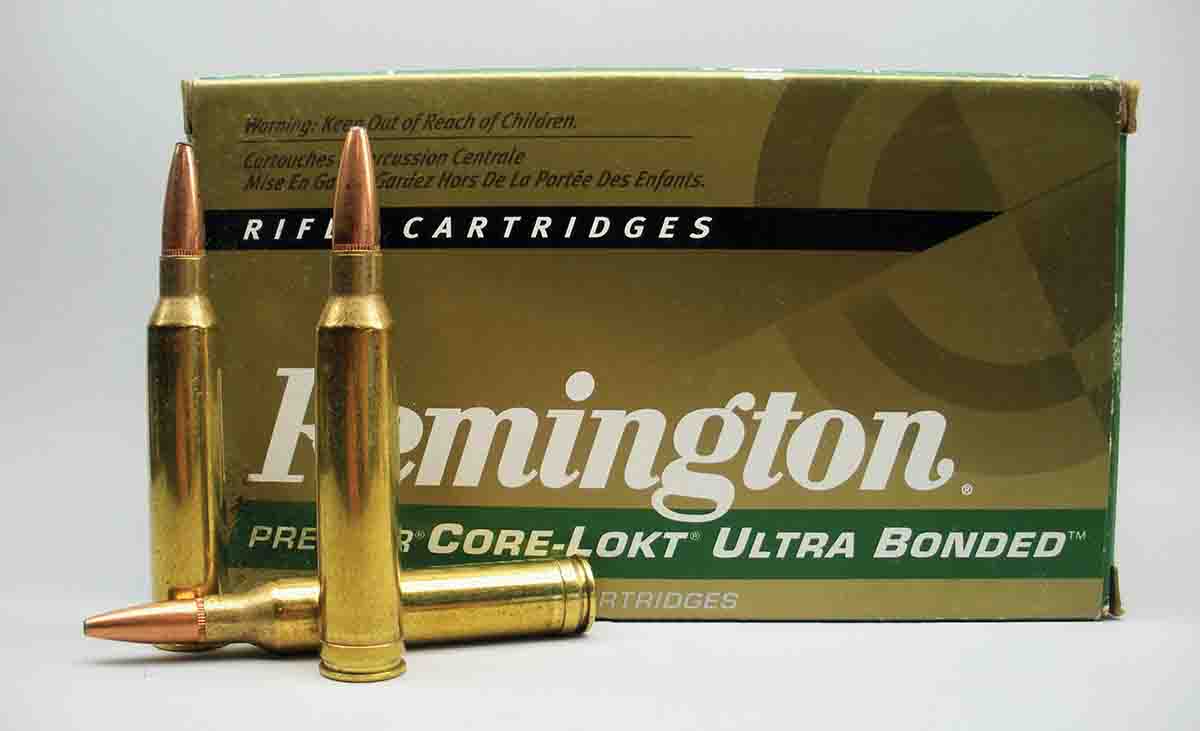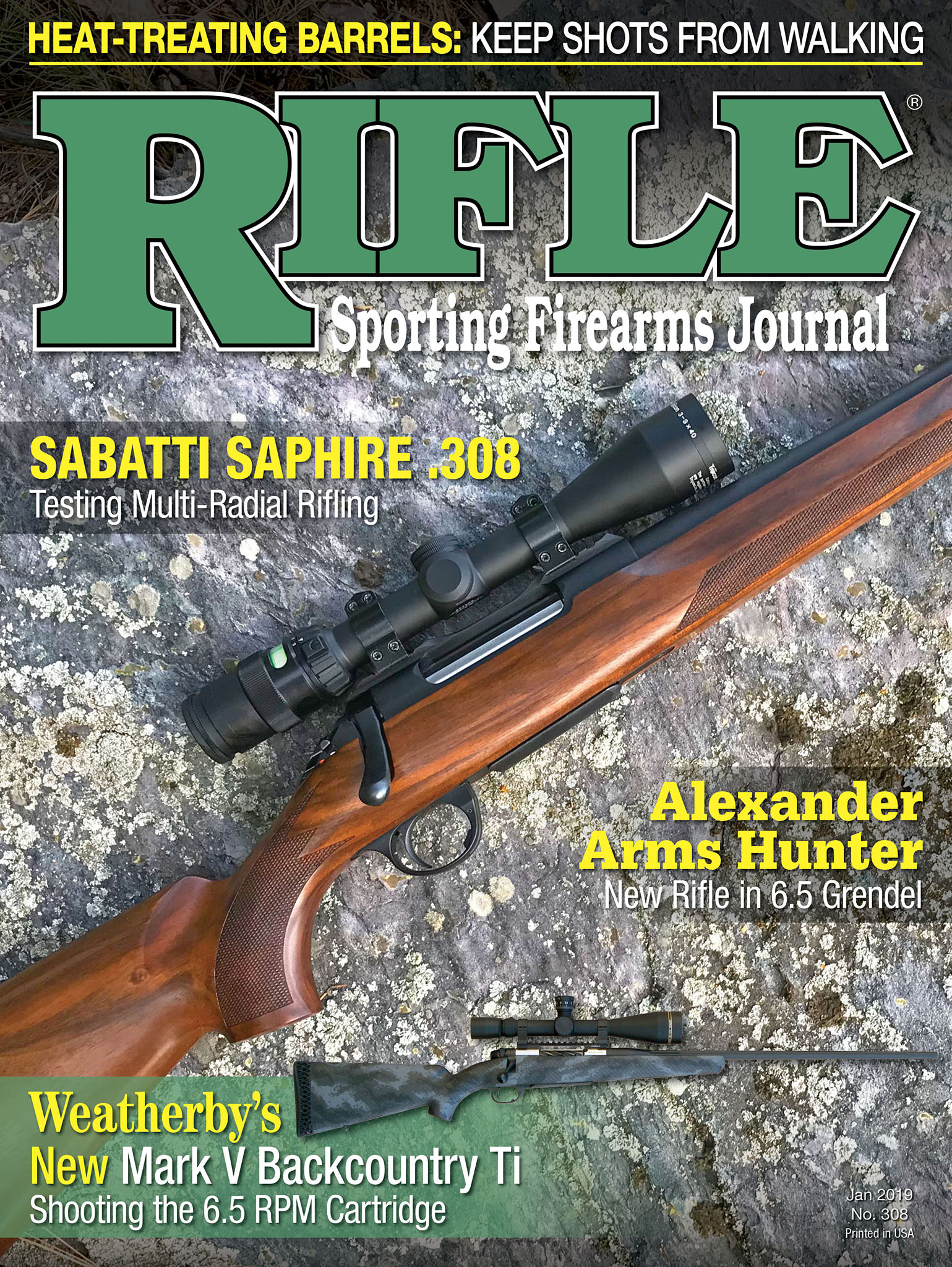Spotting Scope
7mm Remington Magnum
column By: Dave Scovill | March, 20

When unveiled in Remington’s new Model 700 in 1962, the 7mm Remington Magnum could push those bullet weights faster and flatter over extended ranges, but the heavily timbered deer and elk country along the Oregon coast and interior mountain ranges sort of precluded any need for long-range rifles.
Some speculated the 7mm Remington Magnum was the answer to a nonexistent problem, and the .30-06 was largely considered just about perfect for elk with heavier roundnose bullets and deer with 150-grain spitzers. If someone needed more power, the .300 Winchester Magnum preceded Remington’s 7mm by four years.
Other, possibly more experienced, western hunters saw Remington’s big 7mm as just about ideal for hunting high mountain parks and wide-open prairies out West for elk, mule deer, mountain goats, bighorn sheep, whitetail and pronghorn. As an experienced elk and mule deer guide in Idaho, the late Wolfe Publishing shooting editor Bob Hagel suggested all of the above could be covered with one bullet, Nosler’s 160-grain Partition, or maybe bump the weight up to 174 grains for elk. No doubt, a magazine photo of a big bull elk taken within the backdrop of the alpine meadows and stands of tall timber of the Rocky Mountains drew hunters to the Remington 7mm Magnum like no other cartridge before or since.
Several years after its introduction, I borrowed a Savage Model 110 7mm Remington Magnum to hunt elk. During preseason load development with Hornady’s 154-grain Spire Point and Speer’s 160-grain Hot Core, accuracy was adequate and recoil, although stout, wasn’t objectionable. I didn’t kill an elk but decided to keep looking.
That was followed by a custom Mauser 7mm-06 and eventually a string of 7mm Remington Magnum rifles from Winchester, Remington and Savage. At the time, a 7x57mm Mauser appeared to be nearly ideal for most of my hunting, and there was nothing to lose by holding off on a magnum.
One of the finest of the magnum rifles was the Remington Model 700 African Plains Rifle (APR) with a laminated stock that was used on my first safari in Zimbabwe nearly 30 years ago. The APR was the only 7mm Remington Magnum used exclusively with factory loads. For the most part the Remington 175-grain Core-Lokt worked fine for nilgai, feral hogs and whitetail in Texas, elk and mule deer in Utah and plains game in Zimbabwe.
One of the more recent 7mm magnums was the Winchester Short Magnum (WSM). I ordered a Kimber Model 84 with a 22-inch barrel that accounted for a B&C class Wyoming pronghorn (85 yards) and a record class B&C and SCI Mexican Sonoran mule deer (123 yards), both taken with the Barnes 125-grain TTSX. Neither of those shots required a magnum cartridge, of course, but since the short action 7mm WSM was pitched by the gun press from its introduction in 2001 to replace any and all 7mm magnums with its more efficient (chubby) case design that cohabited nicely in a 2.85-inch short action, it seemed logical to give it a fair field trial. Regardless of what I think of it, however, the 7mm WSM appears to have lost most of its glitter, in spite of the relentless sales pitch.

The crankiest 7mm Remington Magnum I used was a Winchester Model 70 with the Ballistic Optimizing Shooting System (BOSS), a device (weight) mounted on the end of the barrel, essentially a micrometer with reference lines for adjustment. In use the BOSS is fine-tuned in an effort to find best accuracy. Shooting at least three rounds at each full turn of the BOSS, it required three boxes of factory loads to find acceptable accuracy, which with the final three shots spanned about .4 inch. That’s fine for a sporting rifle, but expensive, even for handloads.
Working with the Winchester BOSS system also reinforced a conclusion I came to years ago regarding accuracy in sporting rifles, i.e., there is likely a limit to how far the average hunter is willing to go in terms of time and expense to achieve some accuracy standard carved in a capstone on a Mayan pyramid, or wherever else would-be experts find divine guidance. I met my limit with the BOSS while picking up fired brass.
There were at least 15, 7mm magnum wildcats based on the Holland & Holland case and others prior to the advent of the Remington factory version. Of those, one was based on the .264 Winchester Magnum case necked up to 7mm – so simple as to be too obvious. Most, if not all, of the 7mm magnums evolved when things like body taper, neck length, shoulder angle and the yet to be defined “efficiency” factor of big-game hunting rifles began to be recognized among accuracy buffs. How much those factors mattered to the average hunter is anyone’s guess. What we do know, given the popularity of Remington’s big “7” from the get-go, is the public had about had it with all the theories and mumbo jumbo as to what design might be best. It was time to put up or shut up, and the introduction of the 7mm Remington Magnum in the new Model 700 was a near perfect answer.
While it is not widely known, all 7mm bullets used in Remington magnum loads and component bullets packaged for handloading shortly after 1962 are designed for the higher impact velocities generated by Remington’s magnum. Prior to that time, maximum muzzle velocity ranged around 2,400 fps or less for the 175-grain roundnose slugs, 2,700 fps with 154- to 160-grain bullets and 139- to 140-grain spitzers at 2,800 fps in the 7x57mm Mauser. You can toss the 7mm-08 in there for good measure and increase those speeds a bit in the .280 Remington, aka 7mm Express, and/or .284 Winchester, but the velocity numbers noted above are roughly equal to 100- to 175-yard velocities for the 7mm Remington Magnum.
Quality bullets were and still are the chief reason for the 7mm Remington Magnum’s rapid rise in popularity. From the start the 175-grain roundnoses and spitzers were just the ticket for elk in the tall timber and mountain parks, and more than enough for deer and/or antelope and sheep. The 150- to 160-grain weight range could be driven somewhat faster than the same weights from a .270 Winchester with more than adequate sectional density to ensure good penetration, especially against middle-weight African plains game.
To exploit the wide-open range potential of the new magnum, 130- to 140-grain flatbase or boat-tail designs were capable of 3,300 fps and 3,200 fps, respectively, from a 26-inch barrel. Of course, it was the lineup of tough bullet designs with relatively high ballistic coefficients and accuracy potential that made the big 7mm shine when pitted against the competition of the day. With the current crop of super bullets that seems to increase weekly, the 7mm Remington Magnum just keeps getting better.
It is interesting that in spite of the regular influx of 7mm hunting cartridges over the years, the 7mm Remington Magnum not only shows up on the annual list of the most popular big-game hunting cartridges, but it also routinely appears in the top 10 list of reloaded rifle cartridges as well. Both rankings are likely the result of moderate recoil and readily available rifles and ammunition. In effect, for over a half-century, it has been the only 7mm big-game cartridge to successfully fend off all would-be challengers, that for the most part generate more recoil and muzzle blast than the average hunter is willing to tolerate. Considering the advertising dollars spent on ongoing efforts to unseat Remington’s big “7” from its continued level of acceptance, that’s quite an achievement.


